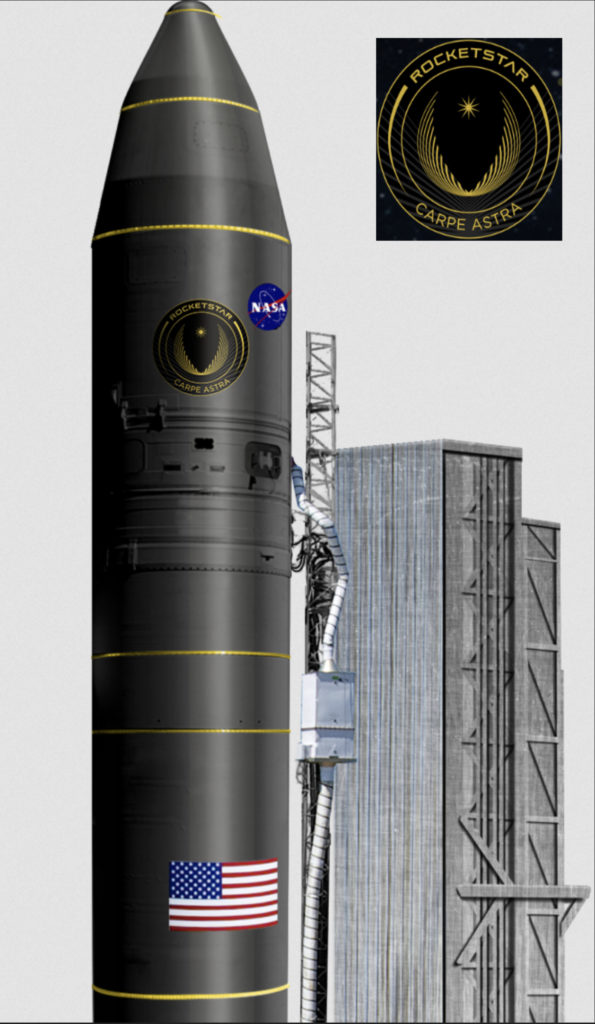
TriSept Corporation has completed the integration of two experimental mission payloads running the company’s new TSEL satellite security operating software for a suborbital test flight aboard RocketStar’s launch vehicle that is set to liftoff from the Koehn Lake Bed in the Mojave Desert.

TriSept has teamed with RocketStar and its 40-foot-tall, aerospike-powered Cowbell rocket to further lower barriers to space for commercial, government and experimental missions, such as the payloads the University of Central Florida and Brigham Young University will launch and study in September.
“This is the first in a series of suborbital flights aboard our RocketStar Cowbell launch vehicle, with each mission powered by the Aerospike engine designed to achieve more altitude and flight data as we build toward our first orbital insertion mission on our larger launch vehicle in 2023,” said Chris Craddock, RocketStar CEO. “RocketStar is thrilled to partner with the experienced TriSept launch and integration team, as we roll in our portable launch facility and throw open the door even wider to affordable and reliable smallsat access to space.”
A small team of UCF students will be closely studying their payload mission, which will simulate asteroid particle activity in space during the 13 minute flight. They will examine a collection of colliding particles inside a device they’ve named the entrapulator, after a similar payload the university has flown on the International Space Station and other vehicles.
The UCF mission aims to shed more light on collisions in the protoplanetary nebula and the evolution of loose materials or regolith on the surface of asteroids during such an impact. Brigham Young University’s College of Engineering students have designed a sensor package dubbed Motron II that will measure motion, acceleration and vibration aboard the launch vehicle and help mission operators better understand and design for launches of small payloads.
In addition to the rich scientific and technical data both university teams expect to harvest from their missions, they are also excited to explore the valuable findings from the first suborbital tests of TriSept’s new satellite security operating system.

“This experiment is providing a new batch of students the chance to interface and gain invaluable real-world experience with seasoned engineers in the space industry,” said Dr. David Long, an Engineering Professor with the BYU Center for Remote Sensing. “We are excited to work with TriSept and RocketStar to put our flight motion payload to the test and to work with flight-grade security software on its maiden voyage in space.”
“Our students are always thrilled to launch a mission into space. TriSept opened the door to this great opportunity for our students to participate in the integration and launch of our payload aboard the RocketStar rocket,” said Josh Colwell, a UCF Physics Professor whose students at the Stephen W. Hawking Center for Microgravity Research and Education have developed the mission studying asteroids. “We are also incredibly excited to be among the first involved in the milestone tests of new satellite security software that could help pave the way to a new level of protected missions in space.”
“TriSept is passionate about opening up safe space access to everyone, including students who often can only dream about getting their experimental missions aboard a rocket and launched into space,” said Jason Armstrong, TriSept’s Director of Launch and Integration Services. “Our focus will be on supporting two experimental missions and the inaugural flight of our new TSEL satellite security operating system running on both university payload missions. It’s another step toward securing small satellite operations with a new protection solution that is now commercially available.”
The TriSept Secure Embedded Layer (TSEL) operating system, capable of detecting, tracking and eliminating known and emerging vulnerabilities on conventional and small satellites, will undergo a series of environmental and operational tests during the thirteen-minute mission to the edge of space.
“This is an exciting collaborative and multi-faceted mission for two innovative companies determined to transform space access, making it simpler and more affordable for small sat missions looking for both shared and dedicated rides into orbit,” said Rob Spicer, TriSept Founder and CEO. “It’s a historic launch of firsts – the inaugural RocketStar launch vehicle carrying a pair of experimental missions and TriSept’s TSEL operating system is on the verge of making satellite missions and the company’s depending on them more secure from this day forward.”
TriSept’s TSEL was developed to meet rising demand across the satellite industry for a managed cybersecurity solution that secures an embedded device much like a terrestrial server is protected. TSEL offers a series of automated mechanisms and updates that deliver far more detailed audit data, near-real-time security analysis and patch updates along with “zero trust” verification layers that protect against hackers and provide an accurate account of what’s happening aboard the satellite at all times.
A rising number of attacks on critical infrastructure across the U.S. and the world have shown just how vulnerable spacecraft can be, especially as the vast majority of small satellites launched into orbit are ill prepared to protect themselves in the event of adversarial threats.
